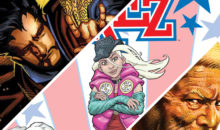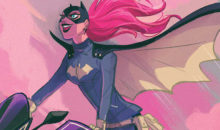Forces in History, Readers of the Present: Women in Comics
Sequart’s Kickstarter Campaign She Makes Comics, a documentary on women in comics, is now complete.
In my last post, I wrote about how the original demographic of comics readers, the majority of which were female, changed from the 1950s onward due to, possibly, the advent of an enforceable Comics Code Authority. I also mentioned that there were more women reading comics from the 1930s to the late 1950s. However, in the actual She Makes Comics Kickstarter Campaign video itself, comic book editor Janelle Asselin states that not only did this female majority of readers exist in the 1950s and the 1960s, but it was due to the comics medium becoming mainstream through an emphasis on the superhero genre that this fact began to change. In fact, the very documentary itself will be focusing on women in comics specifically from the 1950s and onward.
And with even that much information, I just learned something new. Perhaps they aren’t mutually exclusive facts, but they are definitely thoughts that I want to see followed up.
In this sense, the focus on a largely female comics readership of the past is very timely as, now; something similar is being said for the audience of the present. This past weekend, at the ComicsPRO Annual Membership Meeting, Image Comics publisher Eric Stephenson stated that the comics industry’s fastest growing demographic of comics readers is, once again, women. While Stephenson does emphasize that this is the case for Image Comics, he also mentions that this may also apply the comics industry itself.
Eric Stephenson mentions a lot of very interesting points, including how comics sellers can do their part in encouraging innovation and inclusivity in the industry while putting aside the tired old reprints and derivative superhero stories to appeal to a more diverse readership. For instance, I know for a fact that Toronto’s very own Comic Book Lounge and Gallery not only holds comic book launch parties, but has even hosted reading groups and Ladies Night events: and these seem to be the kind of endeavors that Stephenson encourages. Not only does Stephenson actually seem to be addressing many of the industry issues I brought up in Boys and Toys Franchising Make For Better Superhero Cartoons? but also references the superhero genre as something that needs to be innovated along with whole new kinds of stories if the comics industry is to remain fresh and original in order to make material other industries, such as film and television, can adapt accordingly. The rest of Stephenson’s fascinating speech can be read at your leisure right here.
In the meantime, you still have time to join She Makes Comics and get some interesting rewards including: The Girls’ Guide to Guys’ Stuff anthology, an autographed copy of Colleen Doran’s A Distant Soil: The Gathering graphic novel, a portrait drawn from a photo of anyone of your choosing by Miss Lasko-Gross for $200 and, finally, two poster prints of the poem Desert Wind, written by Neil Gaiman and beautifully illustrated by Molly Crabapple: both of which are autographed.
Also, now that the baseline goal of the Kickstarter has been met, She Makes Comics has a new stretch goal. If the campaign gains $50,000, She Makes Comics will film a 10-15 minute mini-documentary on Jackie Ormes: the first African-American female cartoonist and creator of the comic strips Torchy Brown and Patty Jo ‘n’ Ginger. So please, keep that support coming. I know I will definitely enjoy She Makes Comics as both history and as reality.






